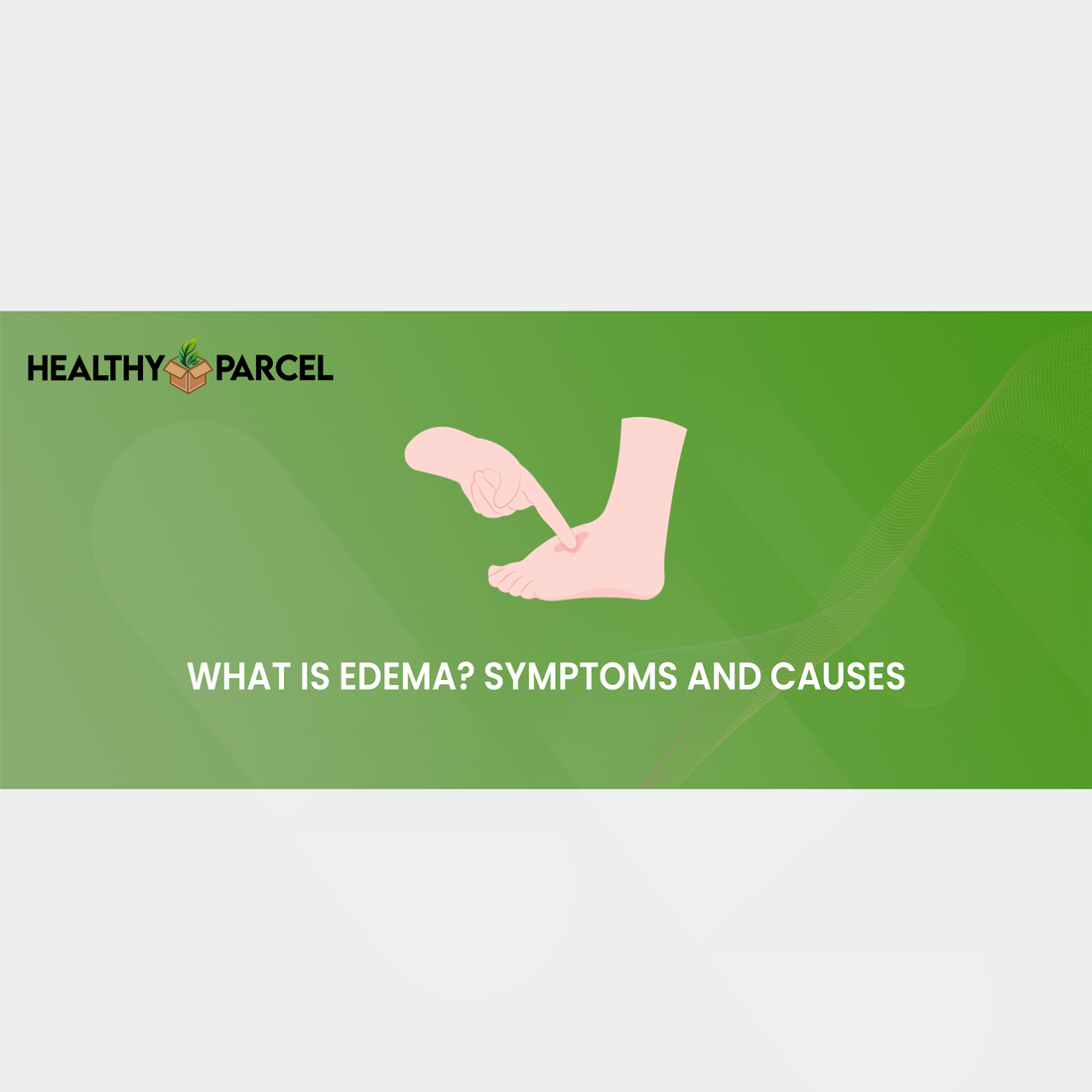What is Edema?

Edema is the medical term for swelling caused by fluid getting trapped in your body’s tissues. It most commonly occurs in the feet, ankles, and legs, but can also affect the face, hands, and abdomen.
Who Does Edema Affect?
Edema can affect anyone, but it's most common in pregnant women and adults over 65.
How Common is Edema?
Edema is quite common due to the many potential causes. Mild cases often resolve on their own, so the exact frequency isn't well-documented.
How Does Edema Affect the Body?
Edema causes swelling in various parts of the body, which can interfere with daily activities. Simple lifestyle adjustments, like elevating the swollen area or moving around after prolonged sitting or standing, can help reduce the swelling. Sometimes, edema is a sign of an underlying health issue, so it's important to consult your healthcare provider if you notice symptoms.
Symptoms and Causes

What are the Symptoms of Edema?
The main symptom of edema is swelling in the body, typically in the feet, ankles, and legs. Other symptoms include:
- Increased size of the affected area
- Stretched and shiny skin over the swollen area
- Difficulty walking if legs, ankles, or feet are swollen
- Coughing or difficulty breathing
- Feeling of fullness or tightness in the swollen area
- Mild pain or soreness in the affected area
What Causes Edema?
After diagnosing edema, healthcare providers will try to determine the cause of the fluid buildup. Potential causes include:
- Gravity: Prolonged sitting or standing can cause fluid to accumulate in the lower extremities.
- Weakened Vein Valves (Venous Insufficiency): Weak valves in veins can make it difficult for blood to return to the heart, causing fluid buildup in the legs and leading to varicose veins.
- Underlying Medical Conditions: Conditions like heart failure, and diseases of the lungs, liver, kidneys, and thyroid can cause edema.
- Medications: Some medications, including those for blood pressure and pain management, can have edema as a side effect.
- Poor Nutrition: A diet lacking in balance or high in salt can lead to fluid retention.
- Pregnancy: Pressure from the growing uterus on blood vessels can cause swelling in the legs.
- Compromised Immune System: Allergic reactions, infections, burns, trauma, or clots can also lead to edema.
How is Edema Diagnosed?

To diagnose edema, your healthcare provider will start with a physical examination, looking for signs of swelling, particularly where the skin appears shiny or stretched. They may also perform diagnostic tests to determine the underlying cause.
What is Edema Grading?
Edema grading is a scale used to assess the severity of edema and estimate the amount of fluid buildup in your tissues.
During a physical examination, your healthcare provider may perform a "pitting test" by pressing a swollen area of your skin for five to 15 seconds. If a dimple (pit) remains after releasing the pressure, it indicates fluid buildup. The grading scale measures how quickly this dimple returns to normal:
- Grade 1: Immediate rebound with a 2 mm pit.
- Grade 2: Less than 15-second rebound with a 3 to 4 mm pit.
- Grade 3: Rebound between 15 and 60 seconds with a 5 to 6 mm pit.
- Grade 4: Rebound takes 2 to 3 minutes with an 8 mm pit.
Management and Treatment

How is Edema Treated?
Edema treatment depends on its cause, especially if related to an underlying health condition. Here are some examples:
- Lung Disease: If edema is caused by conditions like emphysema or chronic bronchitis, your healthcare provider will recommend quitting smoking.
- Chronic Heart Failure: For edema related to heart failure, lifestyle changes such as monitoring weight, fluid intake, and salt intake are recommended. Cutting back on alcohol might also be advised.
- Medication Side Effects: If a medication you're taking causes edema, your provider may adjust the dosage or switch medications. Do not stop taking any medication without consulting your provider first.
Treatment to Reduce Swelling

Besides addressing the underlying cause of edema, you can take several steps to prevent fluid buildup in your body:
- Elevate Your Legs: When sitting or lying down, use a pillow to elevate your legs above heart level.
- Move Regularly: Avoid sitting or standing for extended periods. Take short walks to keep fluid from pooling.
- Wear Compression Garments: Support socks, stockings, or sleeves can help by applying pressure to prevent fluid accumulation. For those with chronic edema, adjustable edema shoes are available.
- Reduce Salt Intake: Lowering the amount of salt in your diet can help manage swelling.
Conclusion
Managing edema involves treating its underlying causes and making lifestyle adjustments to reduce swelling. By elevating your legs, staying active, using compression garments, and reducing salt intake, you can effectively control fluid buildup and improve your quality of life. If you experience persistent or severe symptoms, consult your healthcare provider for further evaluation and treatment.

